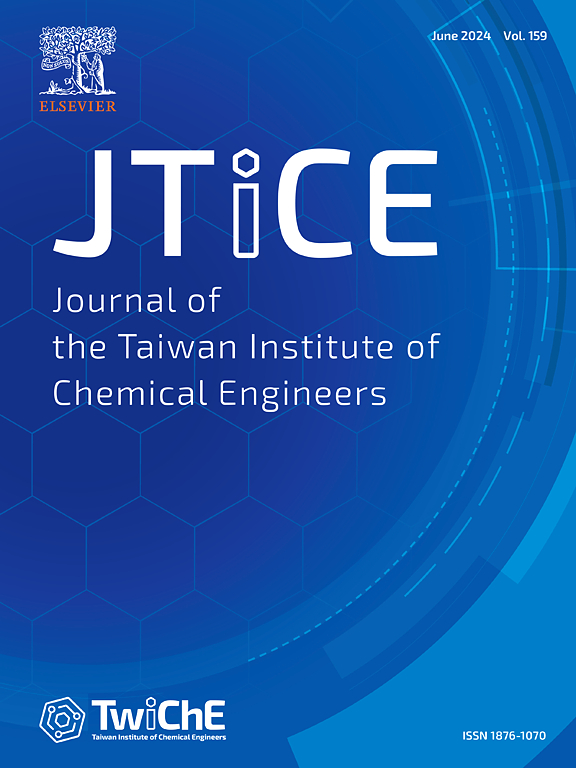Heat transfer enhancement through pulsating nanoparticles in tubes: DPM-CFD and data-driven ANN study
IF 6.3
3区 工程技术
Q1 ENGINEERING, CHEMICAL
Journal of the Taiwan Institute of Chemical Engineers
Pub Date : 2025-07-17
DOI:10.1016/j.jtice.2025.106300
引用次数: 0
Abstract
Background
This study investigates the thermal interactions between nanoparticles and the base fluid inside horizontal and helical tubes under pulsatile inlet conditions considering constant wall heat flux and applying a group of macroscale and microscale external forces on the dispersed phase.
Methods
A four-way Lagrangian-Eulerian numerical solver was developed based on OpenFOAM, considering the discrete particle method for the particle domain and finite-volume approach for the base fluid domain. In addition, artificial neural networks were developed and trained using the obtained simulation data for fast and accurate prediction of the spatial and temporal nanofluid heat transfer dynamics inside the tubes. Water was chosen as the base fluid, and Al2O3 and Ag were used as the nanoparticles in the horizontal and helical tubes, respectively.
Significant findings
The increased particle interactions owing to pulsation assisted the thermal development inside the horizontal tube and augmented the centrifugal effect inside the helical tube. The overall heat transfer coefficient increased by 30–35 %. The neural network models captured the pulsation dynamics with a 3 % error in the heat transfer coefficient prediction with respect to computational fluid dynamics results.

管内脉动纳米颗粒强化传热:DPM-CFD和数据驱动的人工神经网络研究
本文研究了脉动进口条件下水平和螺旋管内纳米颗粒与基底流体之间的热相互作用,考虑了恒定的壁面热流,并对分散相施加了一组宏观和微观的外力。方法基于OpenFOAM开发了一种四向拉格朗日-欧拉数值求解器,在粒子域采用离散粒子法,在基流体域采用有限体积法。此外,利用获得的模拟数据建立并训练人工神经网络,快速准确地预测管内纳米流体的时空传热动力学。以水为基液,以Al2O3和Ag为纳米颗粒,分别在水平管和螺旋管中进行制备。重要发现:脉动增加了粒子间的相互作用,促进了水平管内的热发展,增强了螺旋管内的离心效应。总传热系数提高了30 - 35%。神经网络模型捕获的脉动动力学与计算流体力学结果相比,传热系数预测误差为3%。
本文章由计算机程序翻译,如有差异,请以英文原文为准。
求助全文
约1分钟内获得全文
求助全文
来源期刊
CiteScore
9.10
自引率
14.00%
发文量
362
审稿时长
35 days
期刊介绍:
Journal of the Taiwan Institute of Chemical Engineers (formerly known as Journal of the Chinese Institute of Chemical Engineers) publishes original works, from fundamental principles to practical applications, in the broad field of chemical engineering with special focus on three aspects: Chemical and Biomolecular Science and Technology, Energy and Environmental Science and Technology, and Materials Science and Technology. Authors should choose for their manuscript an appropriate aspect section and a few related classifications when submitting to the journal online.

 求助内容:
求助内容: 应助结果提醒方式:
应助结果提醒方式:


